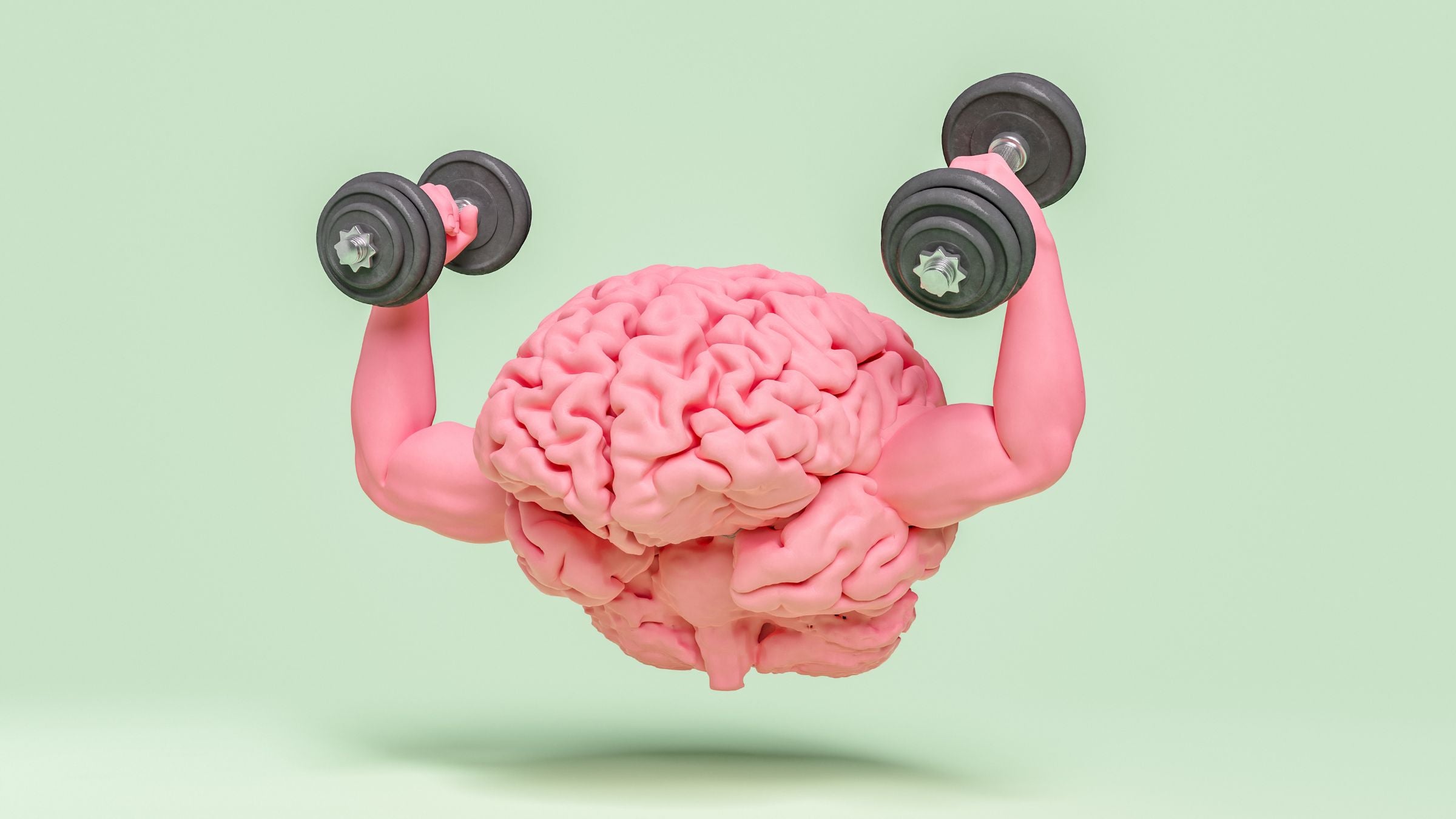Study: Lifting "Mental Weights" Post-Exercise Makes You Faster

A new study has found lifting "mental weights" can have benefits for endurance athletes. (Photo: Getty Images)
“Train your brain like you train your body.” You’ve likely heard this principle – a mantra in the field of sport psychology – but how often do you adhere to it?
While we may appreciate the brain’s involvement in triathlon, we tend to prioritize physical training over mental training. We analyze biomechanics, use heart rate zones, and measure functional thresholds in an effort to build strength and stamina. But, perhaps unsurprisingly, physiology is not the only determinant of endurance performance.
We all know the feeling of being mentally drained: when our brain has been actively engaged for a long period of time and our processing power is limited. Well, it turns out that mental fatigue, as it’s called, also affects performance.
So, in our quest to build stamina, it might make sense to target mental fatigue as well as muscle fatigue.
RELATED: Science-Backed Ways to Make Racing Feel Easy (When it’s Anything But)
A new mental training method: Brain endurance training
Over the past few years, researchers have developed and tested a new training method designed to target both mental and muscle fatigue. Brain Endurance Training (BET) combines mental training with physical training to challenge the brain with cognitive demands, thereby increasing its tolerance to mental exhaustion.
Specifically, athletes perform repetitions of a cognitively-demanding task either during (Concurrent-BET) or immediately after (Post-BET) a training session.
A research paper in the Journal of Science and Medicine in Sport examined the effect of Post-BET on both endurance and cognitive performance – and the results were pretty impressive.
The experiment:
Male elite road cyclists completed training sessions five times per week for six weeks. After each physical training session, the Post-BET group performed one of three cognitively-demanding tasks designed to exhaust the brain: 1) The flanker task, in which participants must indicate the direction of a central arrow, while ignoring irrelevant arrows, 2) The go/no-go task, in which participants must press, or refrain from pressing, a button based on a “go” or “no-go” cue, or 3) The AX-continuous performance test (AX-CPT), in which participants must press a specific button when X appears after A, but a different button for other sequences of letters (e.g. AY, BX, BY). The control group listened to neutral sounds after each physical training session.
To assess the effect of the six-week training block on endurance performance, researchers conducted two similar but independent studies.
In the first study, the length of time participants spent in cognitive training increased from 30 minutes (weeks one and two) to 45 minutes (weeks three and four) to 60 minutes (weeks five and six). This helped maintain an exhausting cognitive load by preventing the brain from getting used to the mental training. Endurance performance was analyzed using a time-to-exhaustion (TTE) test on a stationary bike at either 80% Peak Power Output (PPO) or 65% PPO.
In the second study, the duration of cognitive training remained the same, but the difficulty increased. Furthermore, endurance performance was analyzed using a 5- or 20-minute time trial (TT).
What did the researchers find?
Post-BET increased the cyclists’ stamina by 11.4% (versus 3.4% for control) for 80% PPO and 17.1% (versus 2.8% for control) for 65% PPO. Essentially, Post-BET increased the length of time it took for the cyclists to reach voluntary exhaustion.
In addition, Post-BET improved power by 5.5% and distance by 4% in the 20-minute time trial (but not the 5-minute time trial).
In addition to benefiting endurance performance, Post-BET also improved cognitive performance, as measured by reaction time, improving 19% in Study 1 and 9% in Study 2.
Pretty fascinating.
But, how exactly does BET work?
Just as physical weight lifting strengthens our muscles so they take longer to fatigue, mental “weight lifting” fortifies our brain against mental fatigue, which benefits our performance.
There was no relationship between Post-BET and VO2 max, heart rate, or blood lactate, so improved endurance performance was not due to physiological changes. Instead, psychological factors likely rule the game. The data suggest that post-BET works by reducing the athlete’s perception of effort on both mental tasks and physical tasks.
To modify the common saying: It doesn’t get easier, you just think it does.
RELATED: Your Brain Fatigues First In Running. Cycling? It’s Your Muscles
Putting it into practice
So, what’s the takeaway?
Train your brain like you train your body! Experiment with adding BET to your training plan through apps like SOMA-NPT (used in the current study) or BrainHQ. For now, researchers suggest a total of two hours per week, divided into 20- or 30-minute sessions. But hopefully, that recommended dose will decrease as future studies determine the minimum amount of BET required to elicit performance gains.
If time is limited (isn’t it always?) and you’re using a trainer or a stationary bike, then you can implement BET during your workout (i.e., Concurrent-BET). It’s just as good.
Whether you experiment with Post-BET or Concurrent-BET, the objective is the same: To purposely challenge your cognition when your brain and body are already fatigued. Over time, your brain will adapt, becoming fortified against mental fatigue and increasing your endurance performance.
Training your brain to resist mental fatigue may not be all that fun, but it may help you gain a competitive advantage.